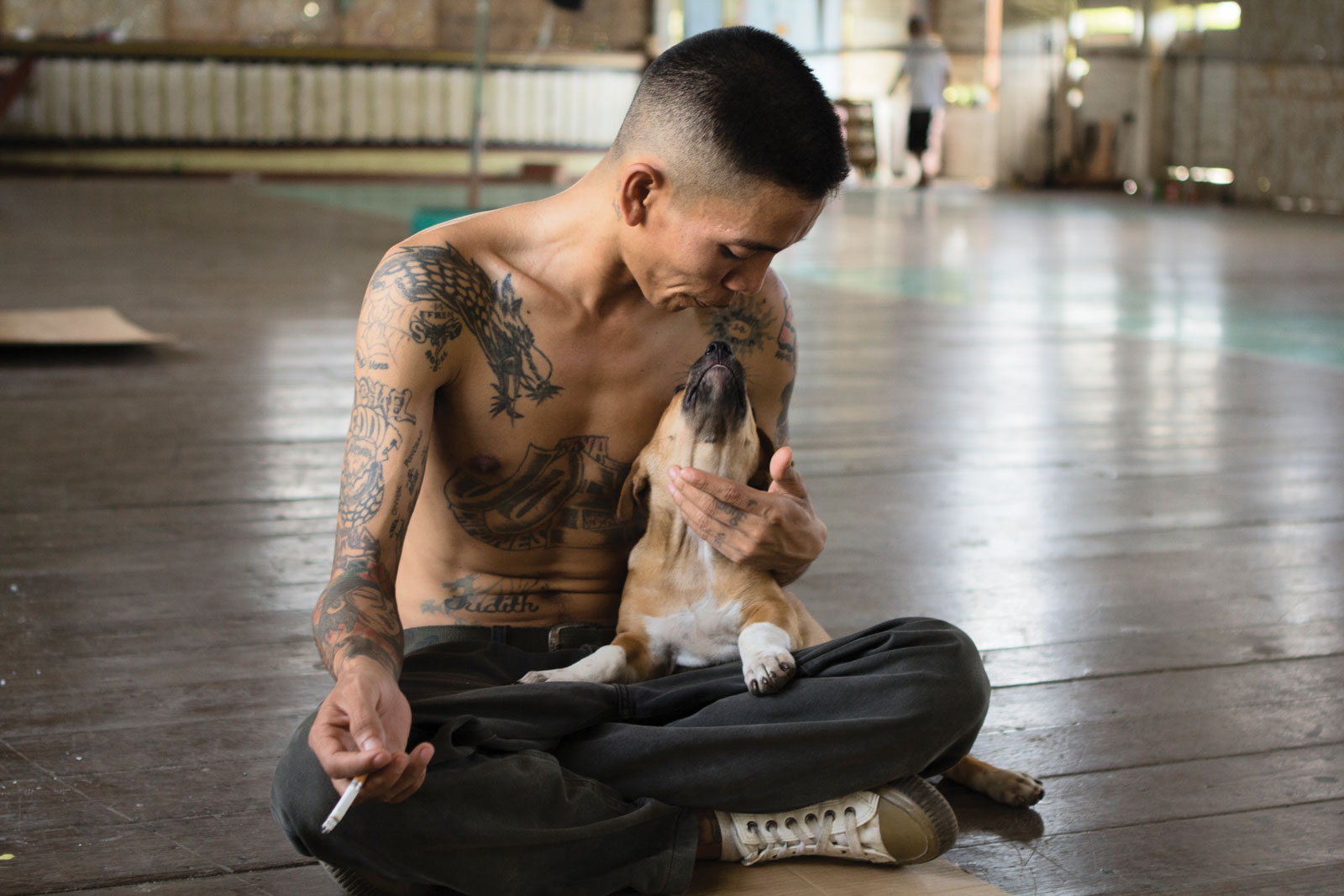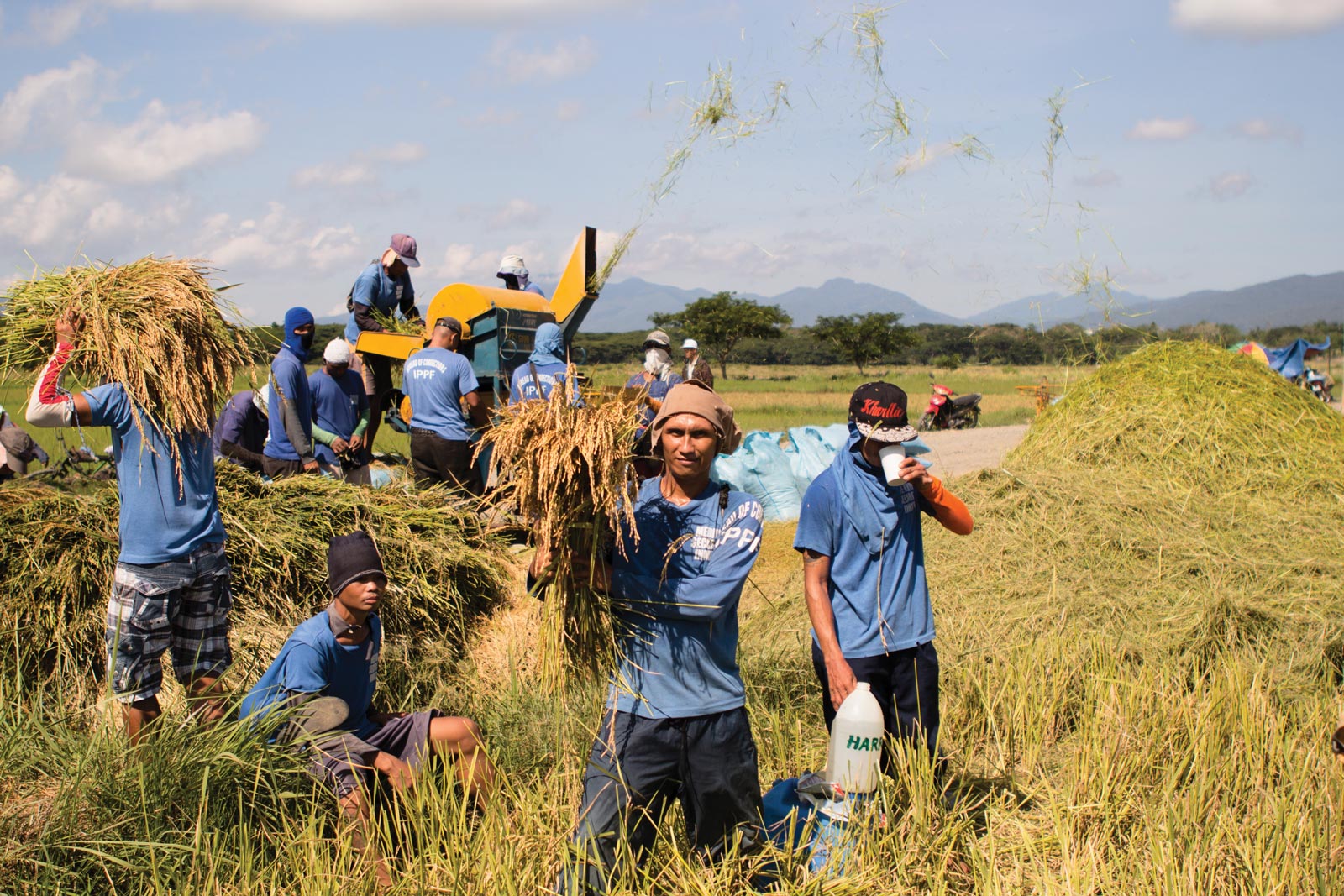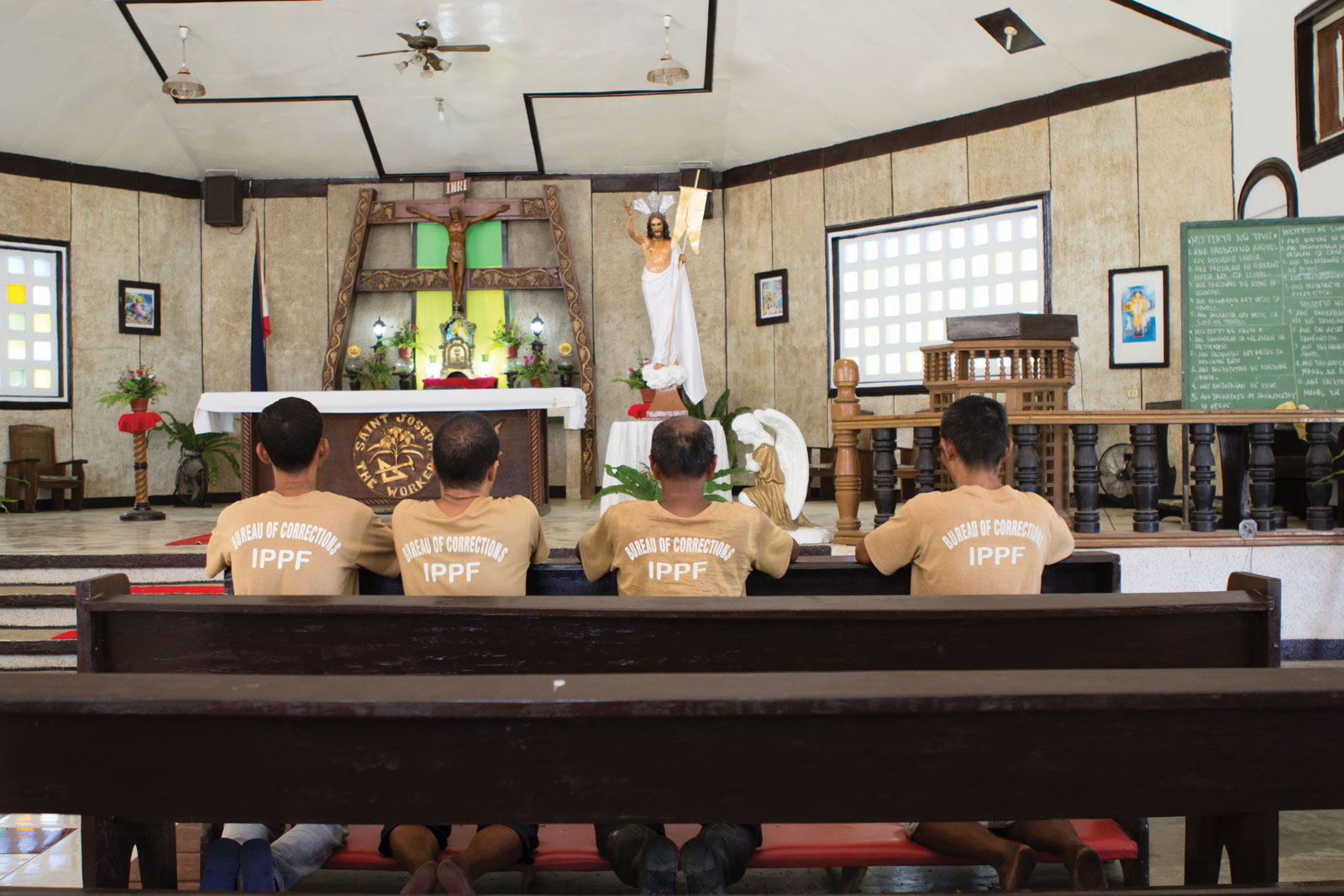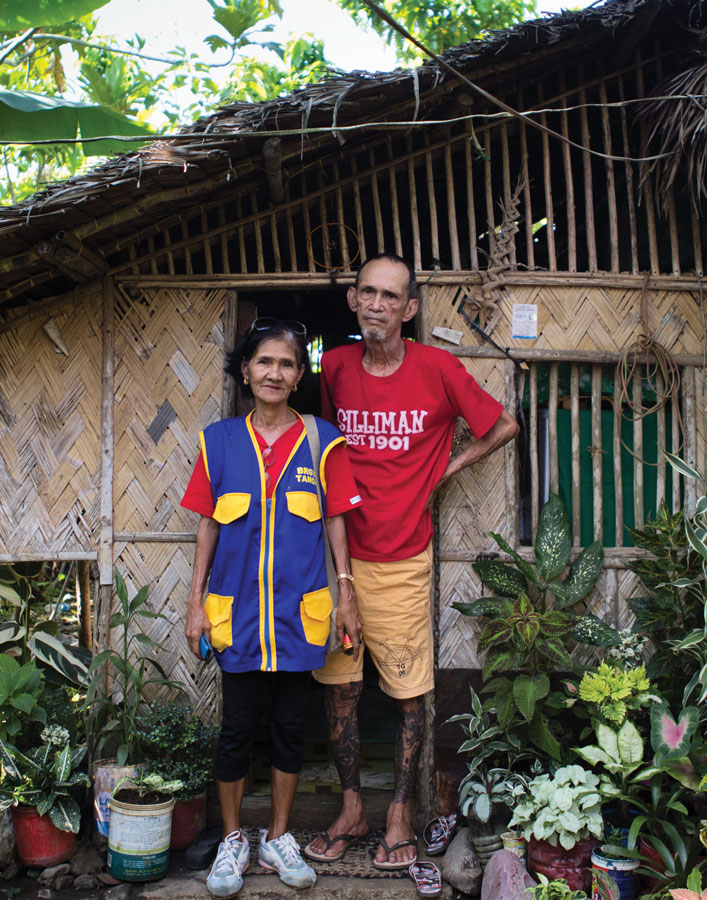Laurence Punciano stands outside the hut near Puerto Princesa city, in the Philippines, where the 57-year-old was imprisoned for a third of his life. Next door is his church, Iglesia Ni Cristo, where 130 criminals gather to worship under his guidance every Sunday.
Neither walls nor guards are needed to prevent Father Punciano, a former drug addict, from escaping. “I was released in September 2011, but I decided to stay because I wanted to take care of the church, and my family is happy with my decision,” says the priest, pointing at two of his four sons.
All of Father Punciano’s children were raised inside Iwahig Prison and Penal Farm. After he was discharged from Manila’s New Bilibid Prison in 1996 and relocated to Iwahig, his wife and eldest child moved with him to the facility. Initially, a former employee of the penitentiary took care of the family, while members of the church helped them build a kuboo (a shelter in the local Tagalog language).
“This jail is [like] nothing you can see anywhere else. Since I was relocated here, I have been given the privilege to live with my relatives day and night,” he says.
One of the world’s largest open jails, this 26,000-hectare property hosts 3,186 inmates, most of whom roam virtually free around the site. There are few boundaries separating thousands of convicts from the outside world

But it’s not his elevated position as a man of God that entitles Father Punciano to live with his loved ones. A dozen more prisoners’ families reside alongside the priest in a lane ironically called Barrio Libertad, or Free Borough in English. They are just the latest of hundreds who have been granted this concession inside Iwahig as part of a unique approach to reforming offenders.
One of the world’s largest open jails, this 26,000-hectare property hosts 3,186 inmates, most of whom roam virtually free around the site. A wire fence, a dozen armed guards and a single doorman greeting visitors at the main gate are the only boundaries separating thousand of convicts from the outside world. Iwahig lies barely 14km from Puerto Princesa, the major city on Palawan, which is a tourist destination famed for its stunning beaches and for a giant underground river system.
Now a free man, Father Punciano insists: “Iwahig prison is a nice place for people who have made mistakes because we experience a special way of serving our sentences.” In 1986, he was handed back-to-back life sentences when, as a 27-year-old drug addict, he killed three drug dealers in Manila.
In today’s Philippines, his addiction would have literally condemned him to death. Under President Rodrigo Duterte’s brutal war on drugs – in which, at the time of writing, nearly 6,000 people had been killed – police likely would have shot the priest dead without arrest or trial. Instead, Father Punciano’s sentence of life imprisonment was reduced to 30 years, with the last 17 served in the prison without walls.
Editors Note: While this piece was originally published in January 2017, today, Iwahig Prison and Penal Farm continues to grow as a tourism site and a model for an alternative approach to criminal reform. In December, AgriNurture Inc. announced it was set to enter into a joint venture with the Philippines Department of Justice (DOJ) over developing the open-air penal colony as an agritourism site. The company said it has approved the “authority to negotiate and enter into a joint venture” with DOJ “for the development of at least 2,000 hectares of integrated agritourism corn plantation” around the prison.
Meanwhile, the debate between harsher punishment vs reform-focused models like that seen at Iwahig continues to rage on in the Philippines. In March 2019, Bureau of Corrections chief Director General Nicanor Faeldon ordered the revocation of inmates’ privileges at the New Bilibid Prison, the country’s largest, due to the entry of illegal items into the penitentiary. This prompted calls by the Philippines Commission on Human Rights to reinstate those rights and instead put in place better management of prisons.
As if masterminded by Duterte himself, Iwahig was set up in 1904 in order to keep the Philippines’ worst criminals isolated on the underdeveloped island of Palawan – 600km away from the capital, Manila.
After World War II, once the Philippines regained independence from the US colonial administration, prisoners who had served out their term were offered parcels of land. Security measures softened in the 1970s, and the families of 50 convicts were allowed to move onto the farm.
A couple of miles away from Father Punciano’s home on Barrio Libertad, hundreds of offenders in blue T-shirts wield machetes in Iwahig’s paddies and meadows. Every morning, nearly 1,000 of these medium-security inmates plant or harvest rice, vegetables and other crops growing in fields scattered across the penal farm. Up to 200 minimum-security prisoners, distinguishable by their beige shirts, are responsible for office-based administration as well as for supervising the blue-shirted detainees.

Aside from maximum-security inmates, who are kept isolated inside the prison, all convicts learn a trade outside their barracks. Most work in agriculture, but some inmates are even trained to attend to their sick peers in a health clinic. The government uses income generated through the agricultural production to recoup funds spent on the prisoners’ upkeep while also paying a stipend to workers. Any remaining profits are administered according to the Bureau of Corrections Act 2013.
As a minimum-security prisoner, 62-year-old Oscar Omisol earns up to $4 (PHP200) a month for cutting grass in Iwahig’s fields, whereas medium-security convicts earn only half as much. A portion of prisoners’ earnings are diverted to a trust account until inmates finish their terms, giving them a small amount of savings to draw on upon their release.
“The treatment here is better than anywhere else thanks to the rehabilitation programmes,” says Omisol, who speaks from experience: he served the first two years of his sentence at New Bilibid Prison, infamous for its violence and overcrowding.

Although Iwahig has only seen 20 escape attempts in the past decade, the successful jailbreak of seven convicts in 2014 has altered the way the prison is managed, with most inmates forbidden to sleep outside the barracks. Both Dick Gaddi and his wife Araceli, 72 and 63 respectively, complain because Dick, convicted of murder on three different occasions, is no longer allowed to spend nights with his wife, two children and their grandson in the family’s Iwahig hut.
“It’s hard for us as we got used to sleeping under the same roof for 15 years,” says Araceli.
Social worker Rose Clarianes, a former member of the Task Force of Detainees of the Philippines, remembers how escalating problems in the mid-1990s contributed to increasingly tight rules. “Inmates used to work as housekeepers taking care of the guards’ children and their houses. But in 1994, one of the prisoners killed a child.”
Convicts even used to work in the construction sector outside the penal farm, but the industry pushed back against the arrangement, saying it was unfair because prisoners’ salaries were lower than those of regular workers.
It is not only tougher regulations that create dissatisfaction among Iwahig’s criminals. Inmate Rafael Santos, 29, who performs pop choreographies for visitors’ cash in the hall of one of the main prison buildings, was placed in Iwahig more recently and doesn’t have the benefit of living with his family. He says he would prefer to be imprisoned in worse conditions at Manila’s New Bilibid Prison, as it would allow him to be closer to his loved ones.
The treatment of the inmates in this prison is better than anywhere else. I don’t think they’re bad people. In fact, I think that anyone is capable of doing what they did if forced by circumstances

“We don’t like it here because our families can’t come to visit us,” he says.
Rates of criminal re-offense are lower among convicts who served at some of the five penal farms scattered across the Philippines, of which Iwahig is the largest and the only one that allows tourists to visit – paintings and handicrafts made by the inmates are even exhibited on the premises for purchase by those who do stop by.
“Less than 10% of the released inmates commit crimes again. I think not even 1% of them reoffend. This is far less than the average,” says Iwahig superintendent Antonio C. Cruz. He claims the ultimate goal of this institution is no longer punitive.
However, Iwahig’s approach to reforming felons seems to be on something of a collision course with that of Duterte, whose first months of presidency [as of March 2019, police estimate this figure could be more than 29,000] have been described as a “human calamity” by Phelim Kine, Asia deputy director at Human Rights Watch.
Although Duterte’s repressive strategy hasn’t yet impacted the Philippines’ penal farms, members of the Senate have pointed to Palawan and one of its 1,028 neighbouring islands as the perfect enclave for constructing an Alcatraz-like detention facility for hardened criminals and high-level drug traffickers. This project could eventually reshape the concessions and privileges granted to Iwahig’s inmates.
“I also miss my family, but this place [Iwahig] is unique because I can walk almost freely. I hope future changes are for the better,” says 36-year-old inmate Effren Espinosa Jr, who is serving a life sentence for stabbing a man when he was a teenager.
James Ali, a 36-year-old visitor who chose to spend a day with his family at Iwahig’s natural swimming pool, agrees that the centre and its inmates are deserving of special attention.
“The treatment of the inmates in this prison is better than anywhere else,” he says. “I don’t think they’re bad people. In fact, I think that anyone is capable of doing what they did if forced by circumstances”.


